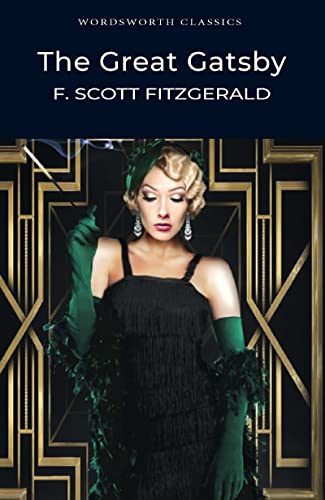Synopsis
In 1922, F Scott Fitzgerald announced his decision to write "something new--something extraordinary and beautiful and simple, intricately patterned". That extraordinary, beautiful, intricately patterned and, above all, simple novel became The Great Gatsby, arguably Fitzgerald's finest work and certainly the book for which he is best known. A portrait of the Jazz Age in all of its decadence and excess, Gatsby captured the spirit of the author's generation and earned itself a permanent place in American mythology. Self-made, self-invented millionaire Jay Gatsby embodies some of Fitzgerald's--and his country's--most abiding obsessions: money, ambition, greed and the promise of new beginnings. "Gatsby believed in the green light, the orgiastic future that year by year recedes before us. It eluded us then, but that's no matter--tomorrow we will run faster, stretch out our arms farther... And one fine morning--" Gatsby's rise to glory and eventual fall from grace be comes a kind of cautionar
About the Author
Francis Scott Key Fitzgerald was born of Irish-American stock in 1896 in St Paul, Minnesota. In 1913 he attended Princeton University. On leaving, without a degree, he joined the army but, although he undertook battle training, he never served on the Western Front in Europe during the Great War. Upon his discharge in 1918 he moved to New York City hoping to launch a career in advertising that would be lucrative enough to convince Zelda Sayle, with whom he had fallen madly in love, to marry him. Initially, Zelda accepted his marriage proposal but, after some time, despite working at an advertising firm and writing short stories, he was unable to convince her that he would be able to support her, leading her to break off the engagement.
Fitzgerald’s first novel, This Side of Paradise (1920), a semi-autobiographical account of his undergraduate years at Princeton, was an overnight success and at twenty-four he became something of a national celebrity. With the influx of money that the novel brought him, Zelda was persuaded to resume their engagement and they were married at St. Patrick’s Cathedral, New York. They became a golden couple of the Jazz Age, living a reckless and careless high life. Much of their stormy relationship is portrayed in his stories and novels.
In 1922, Fitzgerald published his second novel, The Beautiful and Damned, the story of the troubled marriage of Anthony and Gloria Patch. This book helped to cement his status as one of the great chroniclers and satirists of the culture of wealth, extravagance and ambition that emerged during the affluent 1920s. ‘It was an age of miracles,’ Fitzgerald wrote, ‘it was an age of art, it was an age of excess, and it was an age of satire’.
The Great Gatsby (1925) was his third and his greatest novel, although it met with mixed reviews at the time. As the Twenties drew to a close, life became more difficult for Fitzgerald as he struggled with enormous financial problems and Zelda’s severe mental illness. In 1930, Zelda suffered another breakdown and was admitted to a mental health clinic in Switzerland. His wife’s condition and his lack of literary success took their toll on Fitzgerald. After a few barren years during which there was an overindulgence in alcohol, he published his fourth novel Tender is the Night in 1934. It was a commercial failure. After another few years lost to drinking and depression, in 1937 Fitzgerald tried to revive his career as a freelance story writer in Hollywood. Although he reportedly found movie work degrading, Fitzgerald achieved modest financial, if not critical, success for his efforts.
"About this title" may belong to another edition of this title.
